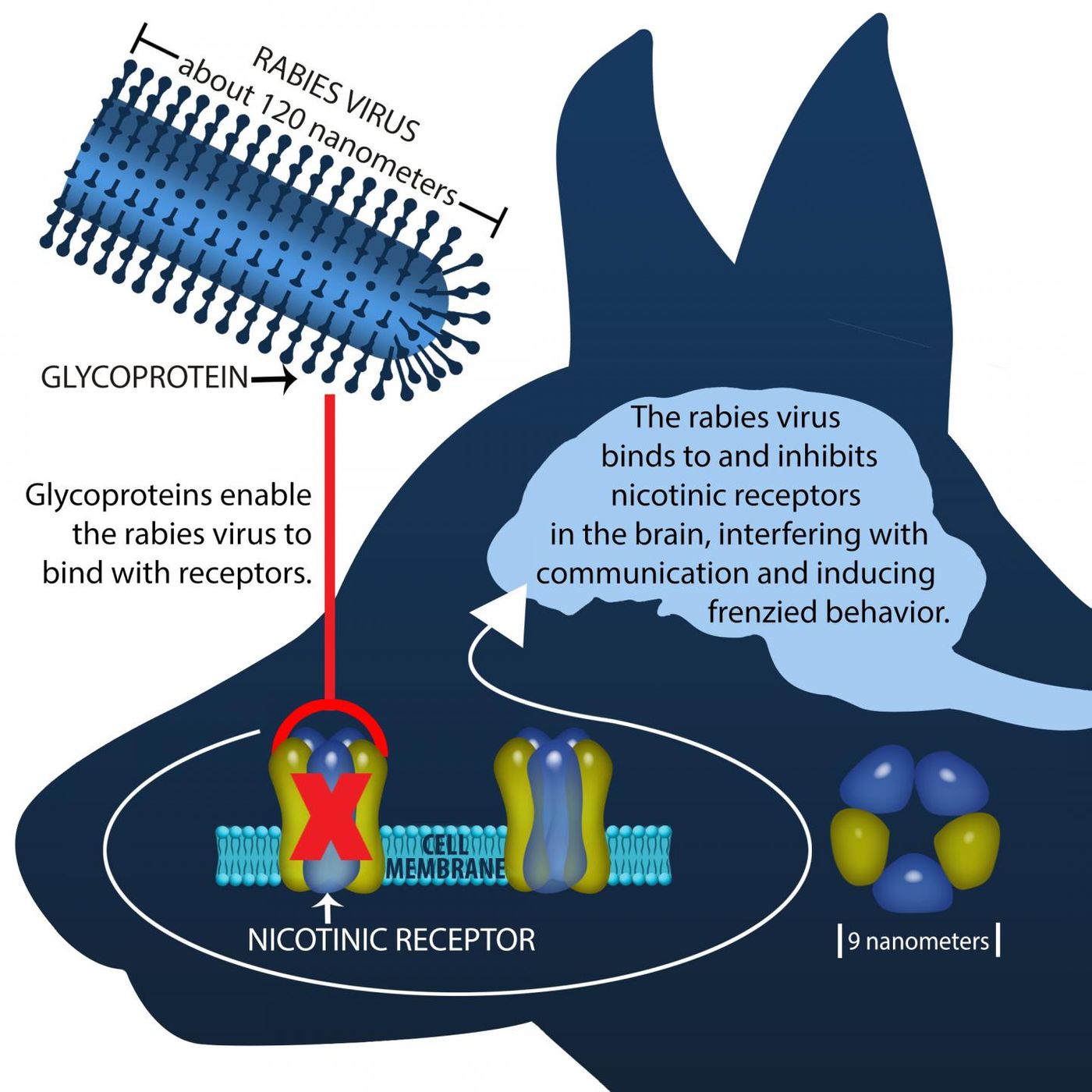Research Reveals how Rabies Causes Frenzied Behavior
While rabies only affects one or two people in the United States, it still kills around 59,000 people every year. Researchers studying the disease have discovered how a part of the virus can affect the brain, which alters the behaviors of the infected host. Publishing in Scientific Reports, they found that the virus binds to certain receptors, inhibiting their function and resulting in the crazy behavior that helps transmit the virus to another host.
"Many infectious agents change behavior in their host, but we do not understand how they do this. Our study provides, for the first time, a detailed molecular mechanism for how an infectious agent induces specific behaviors,” explained the lead author of the study, Dr. Karsten Hueffer, a Professor of Veterinary Microbiology at the University of Alaska Fairbanks. The investigators are hopeful that this work will help improve treatment of the infectious illness, which is fatal if left untreated.
The behavior changes the virus causes help the virus. Dogs, for example, are to blame for around 99 percent of cases of rabies transmissions to humans, estimates the World Health Organization. As to how the changes happen, the virus itself is not very revealing.
"The rabies virus only has five genes and very little information," Hueffer said. "Dogs have more than 20,000 genes with sophisticated immune and central nervous systems. Yet this virus can reprogram a dog's behavior, so it loses fear, becomes aggressive and bites, which allows the virus to spread through the dog's saliva...the behavior is easier to study than the virus itself," continued Hueffer.
The rabies virus does not change the brain in any obvious physical way. While inflammation does occur, it has to be sampled, and tests must confirm it. Researchers learned in the 80s and 90s that the virus binds to nicotinic acetylcholine receptors in the muscles, and then hijacks muscle and then nerve cells. Then it can travel to the brain and infect other tissues. Other findings showed that the virus uses a glycoprotein which is very similar to a molecule in snake venom that inhibits these nicotinic receptors.
Hueffer and his co-author Marvin Schulte saw a connection. Schulte is a former UAF professor now at the University of the Sciences in Philadelphia and an expert on nicotine receptors.
"Dr. Schulte and I put two and two together," Hueffer said. "We knew that nicotinic acetylcholine receptors, which bind to the virus in muscles, are also found in the brain, and we presumed that virus could also bind to such receptors. If snake venom has a similar structure to parts of the virus and inhibits these receptors, we thought maybe the virus could also inhibit these receptors in the brain. Furthermore, we thought that this interaction could influence behavior."
"The viruses collect in the spaces between brain cells during the early stages of infection," Harris said. "These spaces are where brain cells communicate. We thought that if viruses could bind to receptors in these spaces and change how brain cells normally communicate, the virus could change [the] behavior of the infected animal."
This behavioral change works to the virus’ advantage by increasing the odds it will be disseminated. Hueffer and his team injected a small part of only the rabies virus glycoprotein into mouse brains to test the effects.
"When we injected this small piece of the virus glycoprotein into the brain of mice, the mice started running around much more than mice that got a control injection," he said. "Such a behavior can be seen in rabies-infected animals as well."
Hueffer noted that this report is the first evidence indicating a molecular mechanism that results in a change in the behavior of a host, which favors the transmission of the virus.
Learn more about rabies from the video.
Sources: AAAS/Eurekalert! Via University of Alaska Fairbanks, CDC, WHO, Scientific Reports










